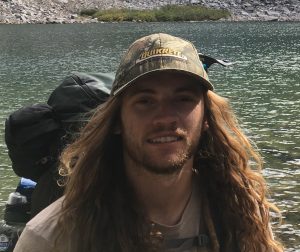Geology and Volcanology of the Cerro Siete Colores caldera complex, Mendoza Province, Argentina

BS Candidate
Advisor: Dr. Dave Kimbrough
Friday, May 8th, 2020
11:30am – via zoom
watch Kyle’s defense here
Abstract
This thesis was undertaken as part of an NSF International Research Experiences for Students (IRES) program grant to support international research activities for U.S. science and engineering students. The focus of the project is to constrain the volcanic history of the Choiyoi Group, an enormous predominantly rhyolitic volcanic province that covers large areas of western Argentina over ~3000 km from north to south, and its possible relationship to climate change and mass extinction events. Previous zircon U-Pb geochronology undertaken on the Choiyoi documents a pronounced non-steady-state volcanic history for the Choiyoi with major peaks in activity at ~267 and ~247 Ma.
This study was conducted within a segment of the Andes that contains the thickest and most laterally extensive exposures of the Choiyoi throughout its outcrop area. The focus is on the Cerro Siete Colores area which was mapped and described by Gregori and Strazzere (2012) as a silicic caldera complex recording two major ignimbrite forming eruptive episodes. Field work centered on the collection of samples for zircon U-Pb geochronology and petrologic work designed to constrain the timing of individual major eruptive episodes and whether the entire complex is part of the Choiyoi Group. Specifically we want to test whether the upper part of the caldera complex is actually part of the Chioyoi Group, or alternatively might represent silicic volcanic vents associated with widely distribute younger middle Triassic rift basin deposits of the Cuyo Basin which include the well-know Darwin forest locality, discovered by Charler Darwin on his traverse through the area in 1835. Up to now, volcanic vents associated with Cuyo Basin ash beds have never been identified. The chemistry of middle Triassic Cuyo Basin ash beds is known to contrast with the older Permian Choiyoi Group volcanic rocks which should aid in this investigation.
Sixteen samples were collected for zircon U-Pb geochronology and petrologic analysis from the Cerro Siete Colores area in January 2020, which was guided by the mapping and stratigraphic analysis of Gregori and Strazzere (2012) who also did extensive subdivision of the units into lithofacies. Sampling included a broad variety of rock types including pumice lapilli tuff, lithic lapilli tuff, breccia, fine-grained airfall(?) tuff, volcaniclastic sedimentary rocks, a distinctive quartz-rich sandstone that dominates the inter-eruptive sequence that separates the two main eruptive phases, and quartz-rich turbidite sandstone from Carboniferous basement to the Choiyoi. Volcanic rocks will be analyzed to determine zircon U-Pb magmatic crystallization ages and whole rock major and trace element analyses via X-ray fluorescence analysis. Detrital zircon U-Pb ages from the Carboniferous basement and the quartz-rich sandstone should constrain the possible relationship of these two units. Sample processing is well-underway but was interrupted by the Covid-19 virus.
Reference:
Gregori D, Strazzere L., 2012 Periodos eruptivos e inter-eruptivos en el Grupo Choiyoi de la Precordillera mendocina. Serie Correlación Geológica, 28 (1): 33-50.

